Drag Curl Vs. Spider Curl
Which Builds A Bigger Bicep Peak?
It’s time to continue our VERSUS series by comparing two underappreciated and underused biceps exercises that are similar in many ways, especially when it comes to targeting that bicep PEAK! However, while both the barbell Drag Curl and barbell Spider Curl are very effective in building muscle, if you could only perform one to build your biceps, which one would you pick, and why?
Which is better, the barbell Drag Curl or the barbell Spider Curl? Well, this is a very reasonable question to ask, considering that these exercises are very similar in terms of bicep recruitment. But doing them both in the same workout is probably not optimal for muscle gain. Remember that the biceps are a small muscle group and all it takes is 1 or 2 exercises to fully exhaust them, especially if you’re training them after your back workout.
But before we dive into the actual comparison of these two movements, let’s first understand how the biceps works. Your biceps is a two headed muscle that lies between your shoulder and forearm. These two heads are often referred to as the long head and the short head, simply because the long head is actually longer than the short. The long head is located on the outside of your arm and it’s responsible for the PEAK of your biceps when viewed from behind or the side. The short head on the other hand, is on the inside of your arm and it’s what gives your biceps THICKNESS and SIZE.
To specifically target these heads is actually quite easy to do. In general, performing bicep exercises with a narrow grip, or inside shoulder width, will mainly target the long head (or outside head), whereas performing exercises with a wide grip, or outside shoulder width, will mainly target the short head (or inside head). However there is a third piece to this equation where you can actually place more emphasis on the peak of the biceps by performing exercises that focus on the contraction part of the curl, or the flex or squeeze at the top of a movement. When it comes to contracting the biceps to target the PEAK, that’s where the barbell Spider Curl and the barbell Drag Curl come in to play.
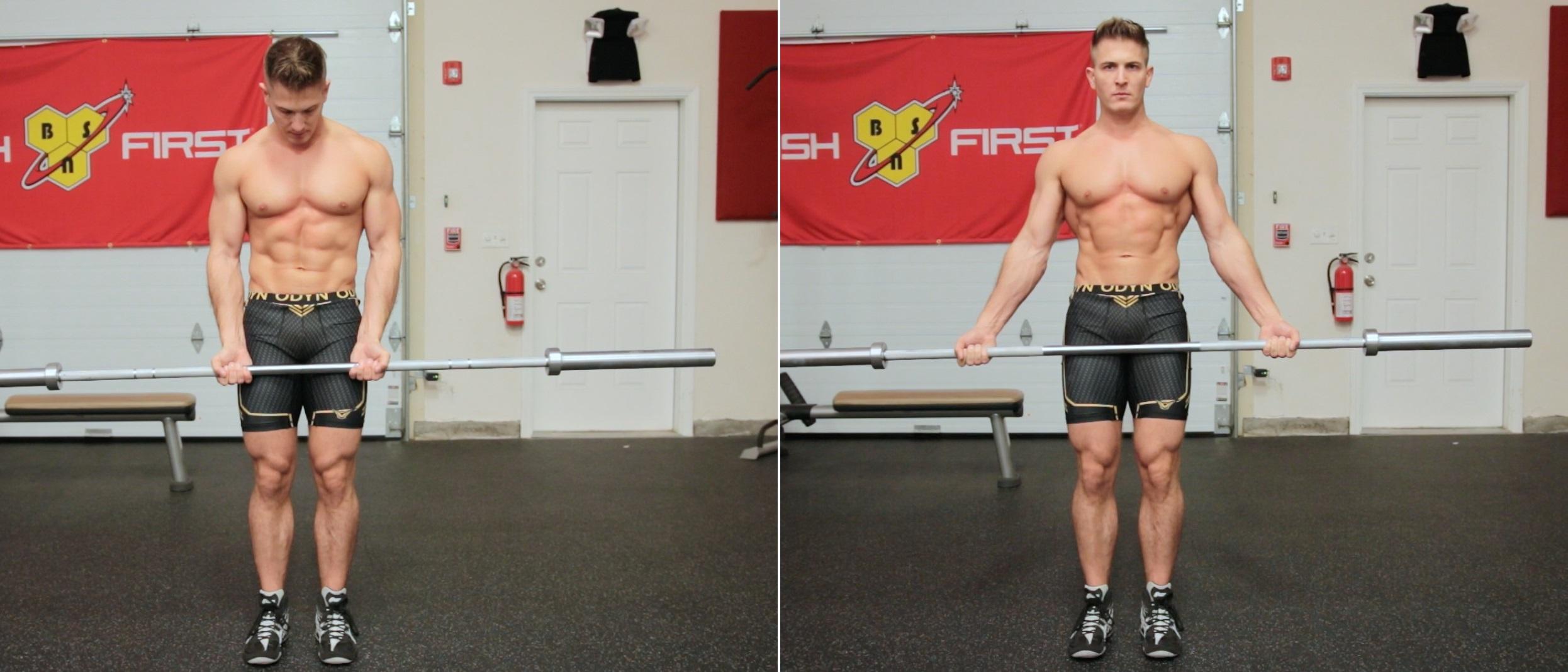
Spider Curl: Proper Form
The Spider Curl is a pretty straightforward exercise, all you need is an incline bench and a barbell. You can also use a preacher curl station if it’s available to you. There are preacher curl stations where one side is straight and one side is angled, in which case you would actually lean on the angled side so that your elbows are resting on the straight side. By doing it on an incline bench, you’re not going to have any elbow support which is going to make the exercise a bit more intense, because you’re going to have to flex and contract harder to stabilize your arms to keep them in the suspended position. Therefore, I recommend that if you’re going to do this exercise, even if the preacher curl is available, just do it on an incline bench.
You can do this exercise with dumbbells or a barbell, and I suggest using the barbell because you’ll be able to load up more weight, and the aim of this exercise is to overload the biceps and hit the peaks as hard as possible, so you want to use as much weight as possible. One last tip is that if your wrists start to hurt, you can use an E-Z curl bar if you have one, but again I’d rather you use a straight bar so can have your palms fully supinated to perform the movement.
You’re going to lie on the incline bench with your chest against the incline, and your arms hanging in front of you. You’re going to have your weight loaded up, and then grab the bar with your hands about shoulder width apart. You’ll get a nice tight grip, and then hang in the suspended position. You have to make sure when your arms are fully extended that you’re not creating any sort of angle, keep your arms hanging straight down.
From here, you’ll keep your elbows in one spot and bring the weight out and up in front of you, and curl it all the way to the top. Once you have it in the top position, this is where it gets really hard. Not only are you curling the weight and contracting your biceps as hard as you can, you’re also fighting your elbows from moving backwards. So keep those elbows in one spot, flex and squeeze your biceps at the top, then come back down to the starting position and repeat for reps.
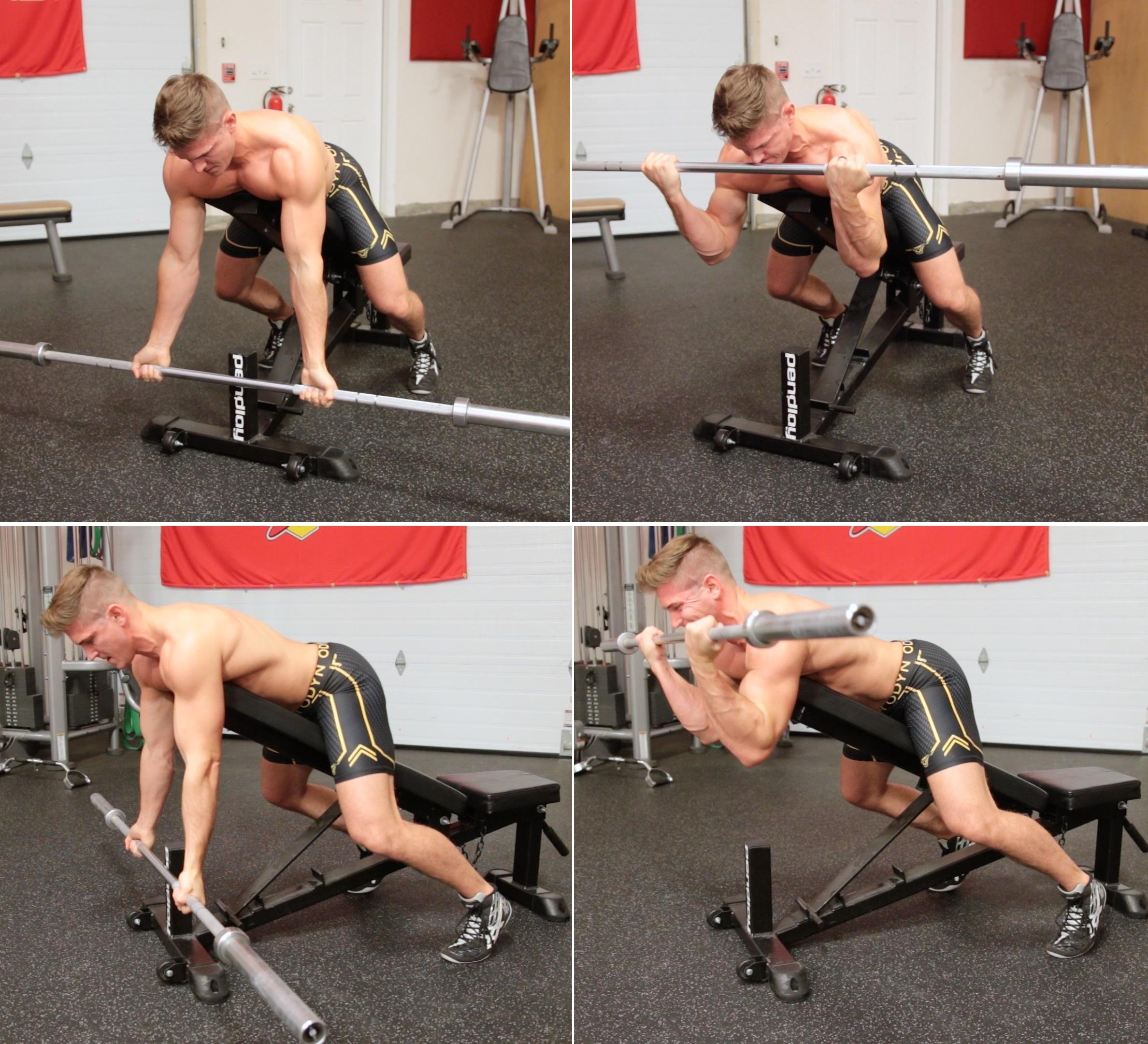
Barbell Drag Curl: Proper Form
Once again, you’ll use a straight barbell for the Drag Curl as well, and you’ll grab the bar with about a shoulder width grip. The difference here, is that instead of a traditional barbell curl where you keep your elbows in one spot (typically in line with, or in front of, your hips) and curl the bar that way, what you’re going to do here is the exact opposite. It’s called a Drag Curl because what you’re doing is dragging the barbell up your body as you pull your elbows back.
For your starting point, your arms should be in the fully stretched position then as you curl you’re pulling your elbows back as hard as you can. You’re also lifting the barbell up and bringing it as high as you can. For the entire repetition, the barbell should be up against your body, and you should be pulling your elbows back super hard to get a really nice contraction in the biceps at the top of the movement. Obviously on the way down, you follow the same movement pattern where the barbell stays close to your body.
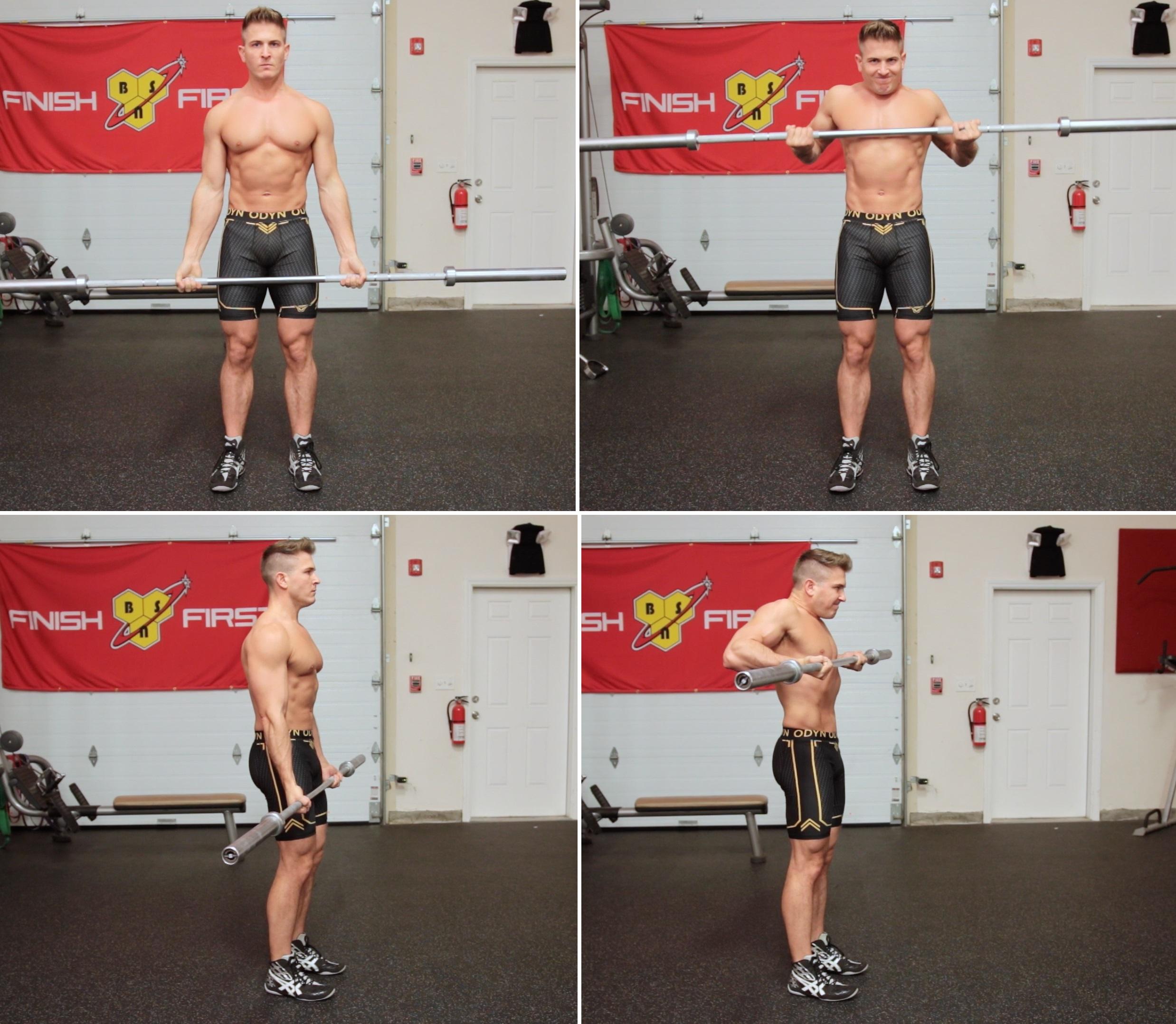
You can also use dumbbells for this movement, but like we already discussed with the Spider Curl, I want you to be able to lift as much weight as possible, and you’ll be able to lift a lot more weight with the barbell.
What Are The Pros & Cons Of Each Exercise?
Right off the bat the Drag Curl has a very obvious advantage of not requiring a bench to perform the movement. I know a lot you go to overcrowded gyms, and the last thing you need is some gym bro getting pissed because he can’t dumbbell press, because you are doing Spider Curls. So even if you end up choosing the barbell Spider Curl, you could still use the Drag Curl as a quick alternative if all the benches are being used. Remember, the point of muscle gain workouts is to get in the gym, crush your workout and get out. Wasting time between sets waiting for a piece of equipment to become available is just not an efficient use of your time.
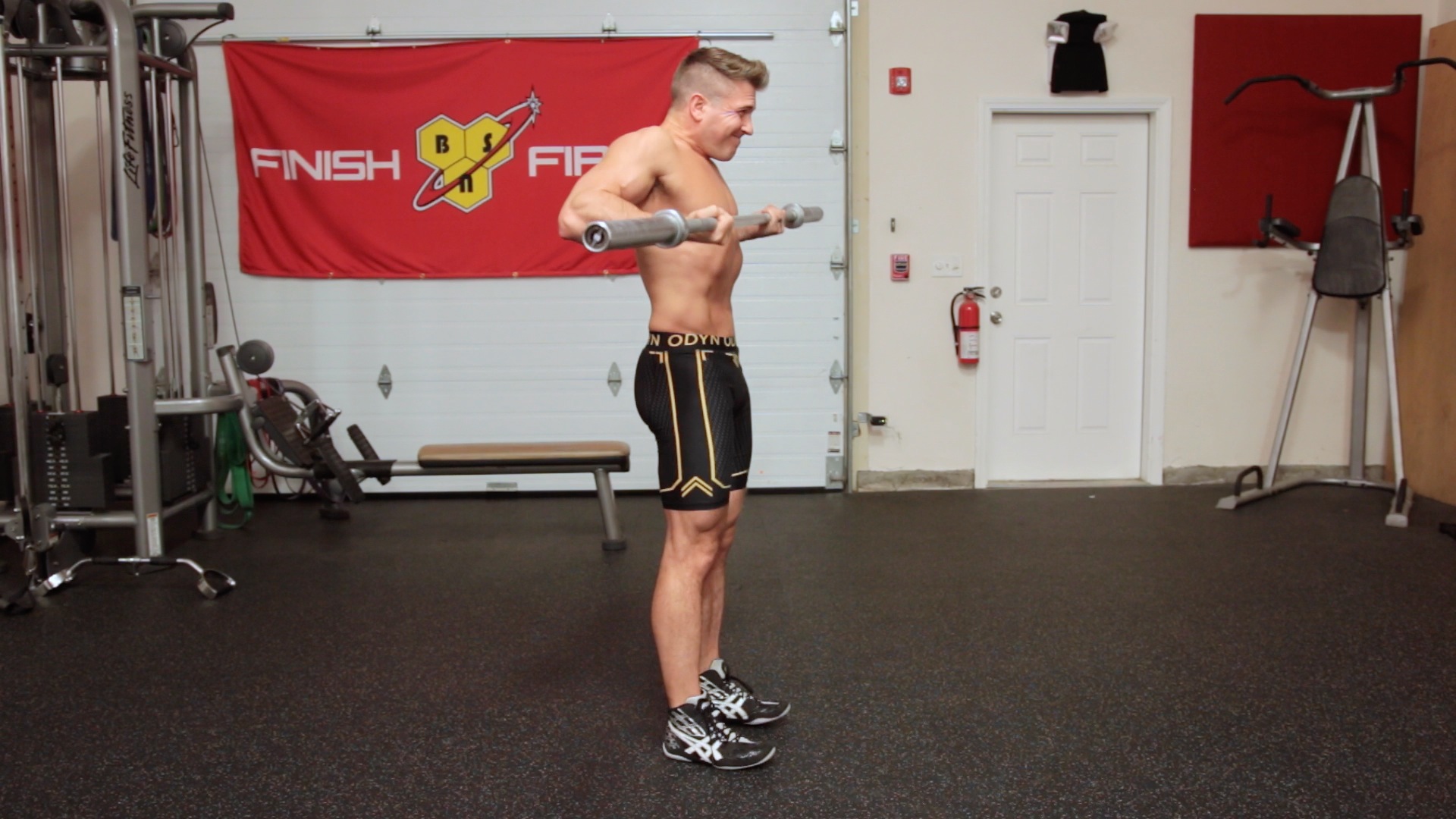
However, the main difference between the two exercises lies in the actual range of motion. The barbell Spider Curl is predicated on your elbows staying IN ONE PLACE for the entire duration of the set. While this is great for isolating your biceps and building a better muscle-mind connection, it’s definitely not ideal in terms of OVERLOADING the biceps or getting a solid stretch at the end of each repetition.
This tells us that the Spider Curl is more of an isolation movement, since it forces your entire body to stay still and eliminates the lower body from the equation. Also, it forces your elbows to stay in the same position in front of your torso, which provides an unreal contraction at the top and hardly any stretch at the bottom. But when compared to the barbell Drag Curl, the technique is very different as your elbows don’t stay in one place. Instead, they begin in front of your body and as each rep progresses, they travel backwards and up, BEHIND your body.
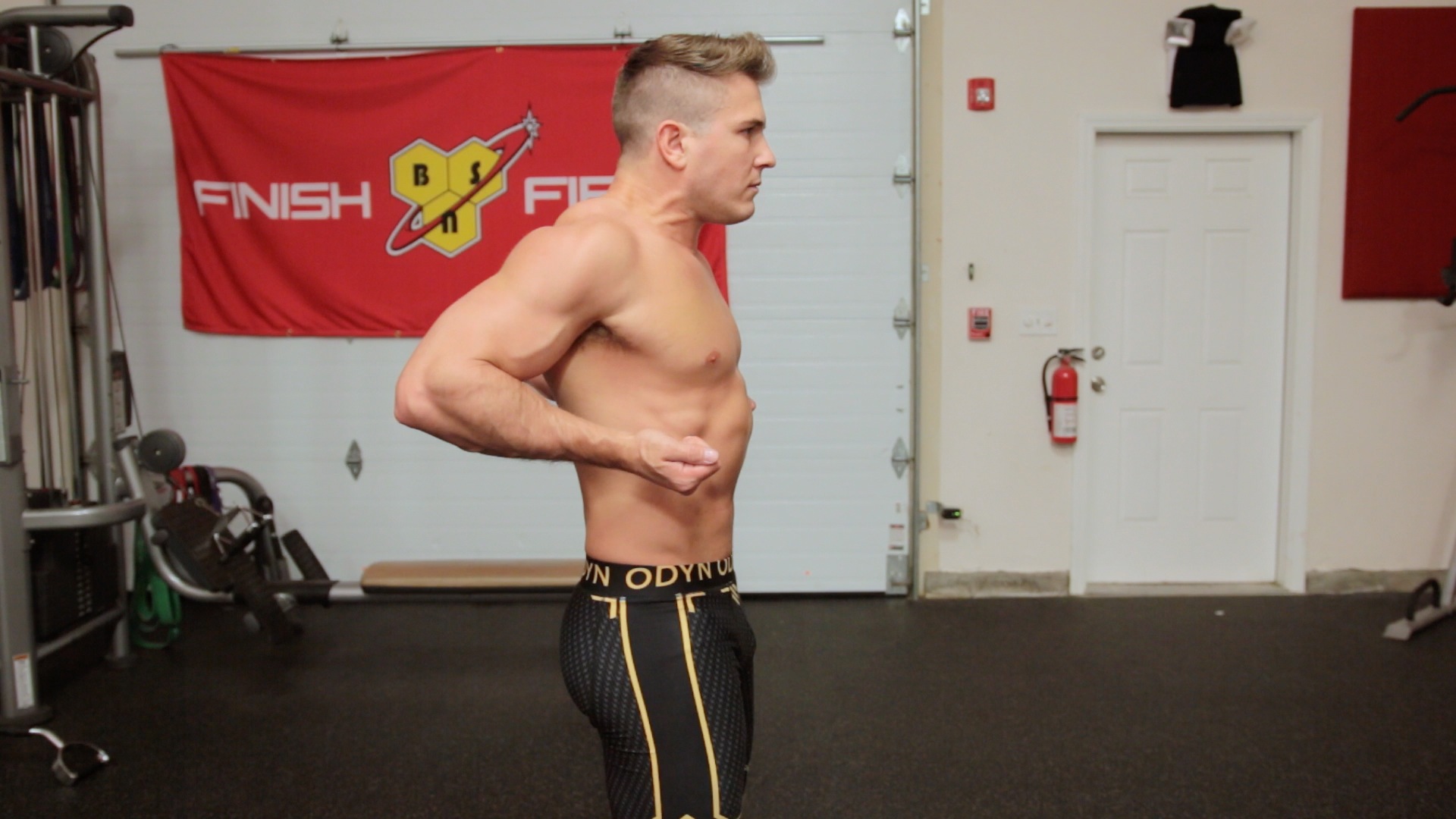
This is important because at the moment of peak contraction, your elbows are behind your body, therefore the Drag Curl actually sets you up for a much harder contraction while the biceps are in a semi-stretched position. This combination of a contraction while semi-stretched is what makes the barbell Drag Curl even more effective at building a bigger biceps peak. If you’re having trouble understanding what the elbow’s position in space has to do with the biceps, you need to understand that the bicep’s main function is to flex the elbow, but it’s secondary function is to actually flex the shoulder. That means that if you place your body into a shoulder EXTENSION, you will stretch the biceps even further. And of course, as I have said MANY times, when it comes to building muscle, the stretch is the most important part of any exercise for sparking new growth.
Final Verdict: Which Exercise Is Better?
Now that we understand the benefits and drawbacks of each exercise, I think it’s pretty clear which one you should choose to incorporate in your workouts, and that’s the barbell Drag Curl. To summarize, the barbell Drag Curl has two distinct benefits over the barbell Spider Curl and those are:
- The potential to overload your biceps with heavier weight.
- The ability to heavily contract the bicep while in a semi-stretched position.
On the other hand, the Spider Curl is still a terrific exercise that has its place in your workouts. If you’re looking for more of an isolation-type movement to fully isolate and engage the biceps, then the Spider Curl should be your go-to exercise. Also, if you’re struggling with muscle-mind connection, the Spider Curl is going to help you immensely. Finally, if you do decide to incorporate the Spider Curl in your workouts, it’s a great idea to combine it with an exercise such as the incline curl. While the Spider Curl works your biceps primarily in the flexed position, the incline curl works them in a stretched position, so if you superset these two movements together you will get the best of both worlds.
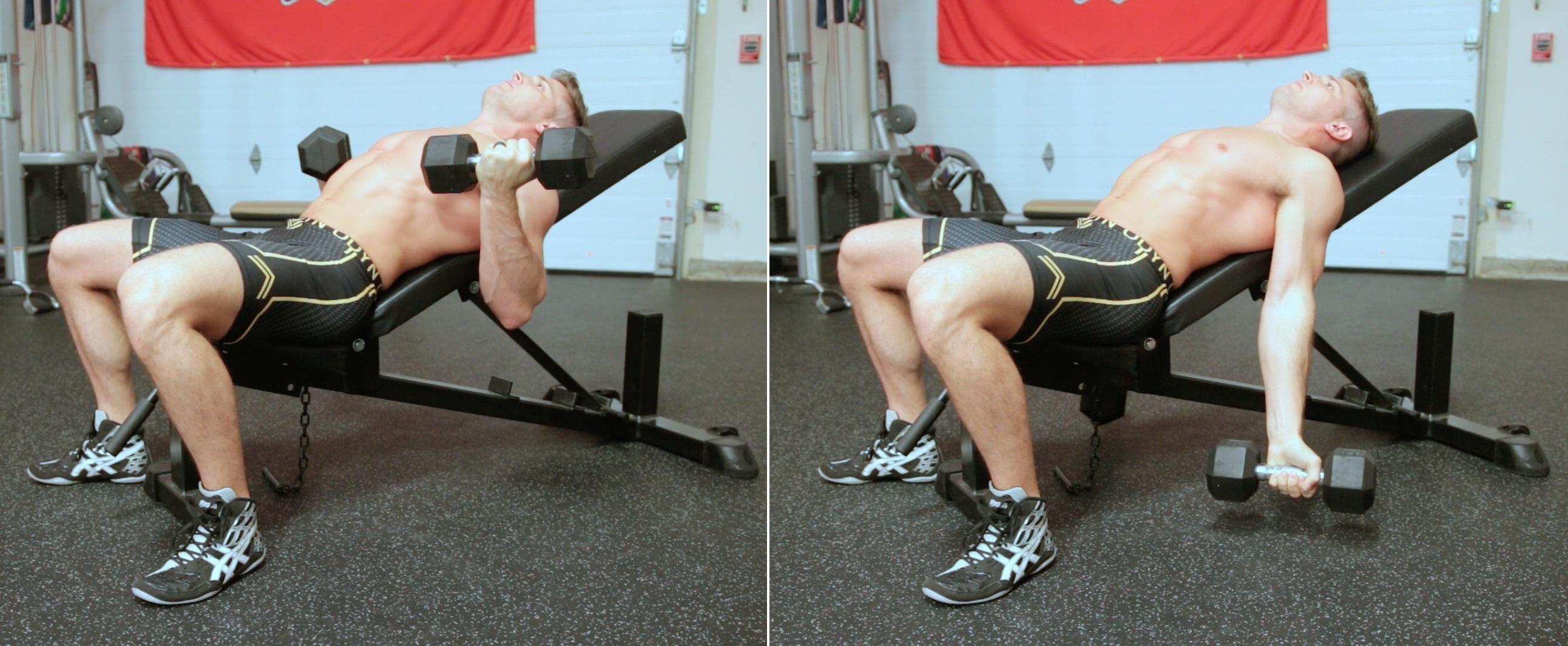
Conclusion
Recapping, if I only had room in my workout for ONE of these two exercises, I would go with the barbell Drag Curl. It’s simple, it’s effective, and it gets the peaks higher. If you want to add the barbell Drag Curl to your current arm workout, I recommend adding it as the last exercise so that you can focus on movements like a standard barbell or dumbbell curl first, because you will be able to lift more weight with those exercises to help you overload your biceps. However, if your peaks are lagging, then it would make sense to start with the Drag Curl first so you can work on bringing them up.
If you are going to finish your workout with the barbell Drag Curl, 3 sets of 8 – 10 reps will be all you need, but if your peaks are lagging and you want to do this movement first. Go with 5 – 6 sets of 8 – 10 reps and really focus on progressing with the movement. As for cheat and recover, I don’t recommend that technique here as the focus is the CONTRACTION, or flex at the top of the movement, and cheat reps would be useless.








